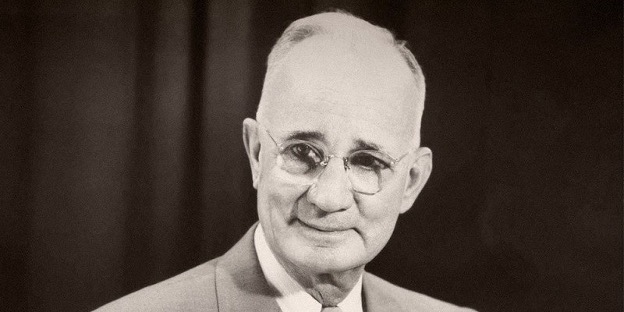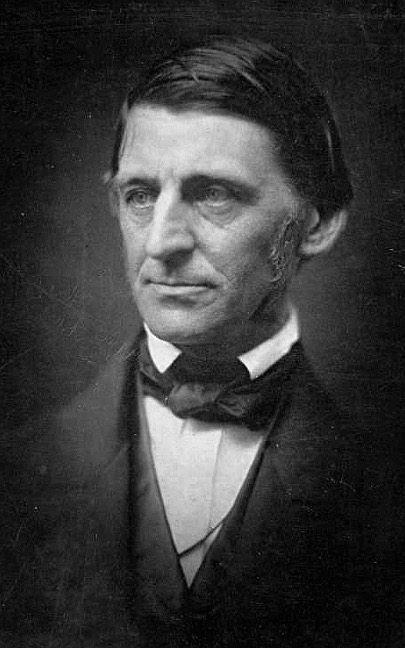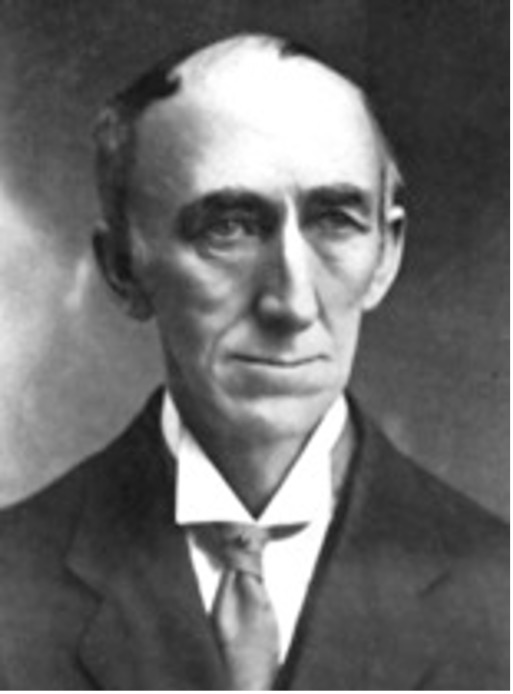
Today, I’m coming out of the closet.
Over a decade ago, I discovered a little book called Think and Grow Rich. Written in 1937 by Napoleon Hill (pictured above), it is considered one of the classic self-improvement books. The basic premise is that our thoughts become things.
If you want to become rich, Hill says, think rich. Develop a plan for how you will acquire wealth, and repeat it to yourself over and over again. Infuse your thoughts with passion and desire, and don’t stop until your wealth appears.
On the one hand, there’s nothing controversial about this idea. Obviously we have to think about our goals to make them happen. The architect plans a building in his mind before he creates a blueprint; the entrepreneur plans a business in her head before she starts to build it. Even the smallest decision — where should we meet for lunch? — needs to be visualized before we can do it.
On the other hand, there is something controversial about success books like Think and Grow Rich. If it was that easy — just think about bags of money and they will appear — why doesn’t everyone do it? The top-rated review on Amazon is a guy complaining that “secrets to success do NOT exist … do yourself a favor and skip this book.” The whole idea of “manifestation” seems weird and woo-woo.
Yet I am here to tell you that this book made a profound impression on me. Straightaway I began to put its principles into action: creating a goal for my fledgling business (which at that time was a hobby), developing plans for how I would achieve the goal, and writing down mental affirmations that I repeated every day.
Two things happened.
The first is that my wife and I began to save money from our day jobs, so we would have a financial cushion to allow us to quit our jobs and go run our company full-time. (We called our savings account the F.U. Fund, or FUF for short.) My wife went full-time into the business first, and I followed shortly thereafter. The rest is history.
The second is that Satoshi Nakamoto wrote the bitcoin white paper around this time, then pulled together a team of developers to start building it. Some years later, my wife and I made our first investment in bitcoin, and the rest is history.
Satoshi probably would have invented bitcoin with or without my affirmations, of course, but these mental habits that I developed over the ensuing years allowed me to be on the lookout for the opportunities to build wealth. When I discovered bitcoin, my Spidey-sense tingled, and I jumped on it.

None of this happened overnight.
I use the analogy of creating tracks in the snow: when you go skiing or sledding on fresh snow, you’re creating new “tracks” for others to follow. But we don’t have fresh snow in our heads, we have these deep tracks that have been created by our upbringing, social class, peer group, media consumption, and so on.
To live differently, we’ve got to think differently.
This requires creating new “mental grooves” in our brain, which can only happen through a lot of hard work: the kind of work outlined in Think and Grow Rich, then applied patiently and diligently, over and over again, until the “success mindset” becomes our natural mindset.
Eventually I wrote a book called Mind Hacking, to bring these ideas into the modern age. By far, it’s my most popular book, and I still get emails from people who tell me how the book (and the accompanying exercises) changed their lives.
But the ideas behind it are much older, and here’s where I must come out of the closet and say, Despite how strange some of these ideas may sound, I believe them.
Here goes.

The New Thought Movement
I quickly discovered that Think and Grow Rich was not the first book to proclaim these ideas. In the 19th century, a movement called New Thought swept American society: the idea that “thoughts become things” gave rise to a host of books, lecturers, and even religions (the best known is Christian Science, whose adherents famously believe that the mind can cure the body).
New Thought has its roots in Transcendentalism, the earlier movement founded by the great American philosopher Ralph Waldo Emerson (pictured above), which borrowed ancient ideas from Hindu philosophy regarding the mind and consciousness. These ideas go back deep into human history, even deeper into the human brain.
Following my discovery of Think and Grow Rich, I read dozens of books from the New Thought movement, which was a rabbit hole even bigger than blockchain. A central premise of New Thought is that our mental states — our thoughts and feelings — eventually become our experience in daily life.
On the one hand, this can sound like superstition, like people who are afraid to talk about bad things because they might happen. (“Speak of the devil and he will appear.”) It sounds like magical thinking.
On the other hand, all thinking is magical. It literally determines the filter through which we view the world. All you have to do is read the news to realize that different thoughts create radically different realities. What’s more, different thoughts create radically different behavior.
This is especially true in the world of blockchain investing, where there is so much noise — buy this, don’t buy that, get in quick, pump and dump, and so on — that it is incredibly difficult to think straight.
If our thinking is chaotic, then our investing will be chaotic.
One of my favorite books is All Your Worth, which I recommend to people who are trying to get their finances straight. The authors have a section at the beginning about believing you can do it: in other words, developing the thoughts that you can build a strong financial foundation. But after a few paragraphs, they move on to their budgeting lessons. And I’m like, “No! Don’t move on! Say more about how to develop these thoughts!”
Similarly, most investing books will talk about an “investing mindset,” without actually telling you how to build this mindset. Most blockchain investing guides explain how to buy bitcoin, without ever mentioning the mental habits you’ll need to build long-term wealth with bitcoin.
Over time, I came to believe that the priorities of most investors (and most investing guides) were reversed: instead of “how to build wealth,” we need to first learn “how to think about building wealth.”

New Thinking Techniques
The challenge I took upon myself was to refine and improve my techniques of thinking.
If “thoughts become things,” in other words, I wanted to know a) whether this was true, and b) how I could improve my thinking to build bigger and better things.
We don’t really teach thinking techniques in our schools, but I came to see that there is a vast, unexplored landscape of the mind that can be mapped and mastered. If I’ve put in 10,000 hours on blockchain and investing research, I’ve put in way more than that on New Thinking.
Like learning to play a musical instrument, this involved many years of practice and experimentation. I tried out dozens of techniques, ranging from the 2000-year-old Yoga Sutras of Patanjali to modern-day books like The Secret. (As a lifelong learner, I’m still trying new techniques today.)
I took the techniques that seemed to deliver the best results, and developed them into a 21-day training program for my book Mind Hacking (which is available for free online, or as the bestselling Audible audiobook that you can enjoy with daily guided meditations).
So I haven’t exactly hidden my interest in the relationship between mind, consciousness, and reality: that our minds have the power to alter our consciousness, and – with time and persistence – alter our reality. Where I’ve been quiet is with my beliefs on the nature of why this works.
Here’s a quote by Wallace Wattles (pictured above), who was one of the founders of the New Thought movement, and certainly the one with the funniest name:
“There is a thinking stuff from which all things are made, and which, in its original state, permeates, penetrates, and fills the interspaces of the universe. A thought in this substance produces the thing that is imaged by the thought. A person can form things in his thought, and, by impressing his thought upon formless substance, can cause the thing he thinks about to be created.”
The idea that the world of thought is actually a “place” made of a “substance” which can be “molded” or “formed” is what I have come to believe.
I put all these words in quotes because it’s a “place” in the same way the world of mathematics is a “place,” it’s a “substance” in the same way a body of knowledge is a “substance.” These are imperfect words that we use for physical reality; the world of thought is different. It’s finer, or subtler.
In the world of thought, we are actually moving around this mental matter, forming new structures and concepts, and (if we do it with enough skill and persistence) we can actually bring them from the world of “thought” to the world we call “physical reality.”
Again, think of the architect that builds a structure in his mind, drafts up a blueprint, then works with builders to bring it into being. At one level, we all understand this is just the way things work. It’s common sense.
But when you say, “You can use these same powers of thought to build wealth with blockchain investing,” some people look at you like you’re cray-cray.
Here we go anyway: You can use these same powers of thought to build wealth with blockchain investing.
How to Think and Grow Rich
I could write another book on how we go about practicing these techniques, but one good place to start is the creation of desire.
We’ve all started some new habit — a new diet or exercise routine — only to lose our desire for it in the first few weeks. The “fuel for the fire” is desire. (Which rhymes.)
You can try starting and ending each day with a simple mental affirmation like the following:
I am building more desire for building more health, wealth, and happiness
That’s it. If you want to infuse it with some positive feeling, or smile as you’re saying it, that will help. (You can see more of the cognitive research behind these techniques in Mind Hacking).
It does take time, so you really want to commit to this experiment. This is why I keep a Moleskine notebook where I write down these daily “thought loops,” so I can see physical proof of my mental habits.
It also takes work, so you can’t just expect to “think and grow rich.” (A better title would have been “Think, Plan, Do, and Repeat Until You Grow Rich.”) The good news is you’re already doing this work, by learning and reading all you can about blockchain investing. Correct thinking will turbocharge this process.
So, congratulations on making it this far in today’s column. I know you’re serious about this – or at least intrigued enough to give it a try.
Who knows? With a little courage, maybe you’ll come out of the closet with me.

